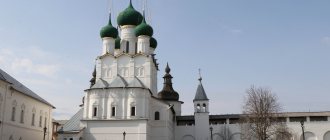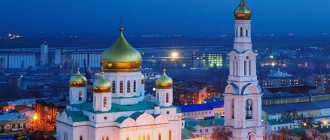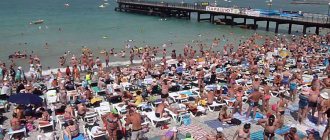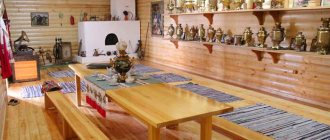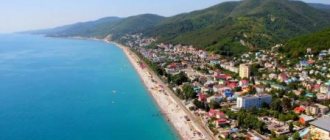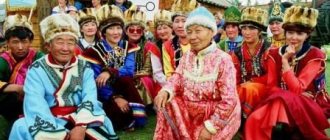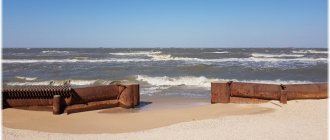On the shore of a lake with the mysterious name Nero is located one of the oldest Russian cities - Rostov the Great. Today it is part of the famous tourist route “Golden Ring of Russia”. What attracts tourists to this town with a population of thirty thousand people?
First of all, travelers are fascinated by the rich history of Rostov the Great. Thousands of tourists come to enjoy the provincial atmosphere of the outback, the melodic ringing of bells, and the discreet beauty of monasteries and churches. Let's look at the most interesting sights of the city.
If you are planning a trip for several days, read what other interesting places there are in the Yaroslavl region near Rostov. And also, which cities of the Golden Ring nearby can be included in your route.
There are many historical places in Yaroslavl and neighboring regions. The most interesting things less than a hundred kilometers from Rostov:
- Yaroslavl (80 km)
- Pereslavl-Zalessky (70 km)
- Tutaev (90 km)
- Uglich (90 km)
Monasteries and churches
Spaso-Yakovlevsky Monastery
Address: Engels street, 44 Telephone: 8 (48536) 7-43-69; (excursion service) Website: rostov-monastir.ru Opening hours: 07:00-19:30, daily Cost: free
Like the city of Kitezh, the Spaso-Yakovlevsky Monastery rises above the waters of Lake Nero. The monastery was founded in 1389 by Bishop Jacob, who was expelled from the city for pardoning a criminal. However, Jacob could not leave his native land, so he settled near Rostov. With his own hands he cut down and erected a small wooden church in the name of the Conception of the Blessed Virgin Mary.
Gradually, a community began to form around Jacob, which grew into a new monastery. But the real flourishing of the monastery came under the Rostov Metropolitan Dimitri at the beginning of the 18th century. To this day, the relics of the saint are kept within the walls of the monastery.
To this day, life in the monastery is in full swing: icons are being restored, vestments for the brethren are being sewn, prosphora is being baked and subsistence farming is being carried out.
Assumption Cathedral
Address: st. 50 years of October Phone: 8 (48536) 6-15-02, 8 (48536) 6-17-17, 8 (48536) 6-55-36 Website: rostmuseum.ru Opening hours: 10:00-17:00, daily Cost: free
The Assumption Cathedral was once the cathedral of the Rostov-Yaroslavl diocese. The temple is located not far from the Rostov Kremlin and is united with it into a common ensemble.
Upon careful examination, you will notice that the cathedral's architectural structure is similar to the Moscow Assumption Cathedral.
It is known for certain that the temple was rebuilt several times due to numerous fires. The church acquired its modern appearance in 1512. However, it has not yet been possible to establish the exact date of construction of the temple. There is an assumption that the cathedral was built in the 12th century, as evidenced by the frescoes found.
The highlight of the temple is its baroque iconostasis, made in 1740. It is noteworthy that an exact copy of this iconostasis is located in the Goritsky Monastery of Pereyaslavl-Zalessky.
Avraamiev-Epiphany Monastery
Address: st. Zhelyabovskaya, 32 Phone: 8(48533) 6-37-12 (call 09:00-18:00), 7 (48536)6-40-05 Website: Yaroslavl diocese https://monasterium.ru/monastyri/monastery/ avraamiev-bogoyavlenskiy-zhenskiy-monastyr/ Working hours: 07:00-20:00. Evening service at 17.00 (weekdays), liturgy 06.30 weekdays, 07.30 on weekends and holidays Cost: free
On the shore of the picturesque Lake Nero is located another of the ancient monasteries - the Avraamiev Epiphany Convent.
There is a legend telling about the origin of the monastery. Once upon a time in these places there was a temple of pagans, the Monk Abraham of Rostov with all his heart wanted to guide people on the path of true faith and free them from idolatry of the pagan god Veles. One day a vision was sent to him from heaven, and he went to Constantinople. Crossing the Ishnya River, Abraham met with John the Theologian. The saint handed the monk a magic staff, with the help of which the statue of Veles was destroyed once and for all. In memory of that significant meeting, a church was built on Ishna in the name of John the Theologian, and on the site of a former pagan temple, the Church of the Epiphany was founded.
Over time, a monastery of monks arose around the church. To this day, life in the monastery continues.
Boris and Gleb Monastery
Address: Yaroslavl region, pos. Borisoglebsky, Sovetskaya sq., 10 Phone: +7 (48539) 2-15-41 Website : https://borisoglebskiy.cerkov.ru VK group : https://vk.com/monastyr1 How to get there: by bus, following route Yaroslavl - Borisoglebsky
The history of the Boris and Gleb Monastery is inextricably linked with the names of several Orthodox saints. In the second half of the 14th century, through the efforts of the hermits Fyodor and Paul, the construction of a temple began here, and this place was indicated by the Venerable Sergius of Radonezh himself, with whose blessing the church was built.
The Borisoglebsky Monastery was a favorite place of the Moscow princes, so it never experienced a lack of funds and until the 17th century it was one of the richest on Rostov soil.
The name of the Monk Irinarch the Recluse, who lived here during the Time of Troubles, is also associated with the name of the monastery. In 1612, Prince Dmitry Pozharsky and Kuzma Minin turned to him for his blessing as they set out to liberate Moscow from the Polish invaders.
In the Borisoglebsk monastery, more than one Orthodox shrine is still preserved; holidays and festivals are held annually.
Trinity-Sergius Varnitsky Monastery
Address: Varnitsy village Telephone: (pilgrimage service), +7-960-526-70-33 (reception of the rector) - call from 09.00-17.00 Website: varnicy.ru Opening hours: 08:00-19:00 daily. Duration of the excursion: 45-60 minutes Cost: donations for the excursion: adults - 50 rubles, children - 20 rubles, minimum 500 rubles per group. After the tour - free tea with monastery pastries and honey. How to get there: by bus No. 108
The Trinity-Sergius Varnitsky Monastery traces its history back to 1427. Its founder was Rostov Archbishop Ephraim, who built the temple on the site of the former father's house of Sergei of Radonezh. Until the second half of the 18th century, the monastery led a miserable life, constantly experiencing material difficulties.
The main temple of the Varnitsa monastery, like the Trinity-Sergius Lavra, is dedicated to the Holy Trinity. Initially it was made of wood, but in 1763, at the expense of the Rostov Bishop Afanasy Volsky, it was rebuilt into stone.
With the advent of Soviet power, the monastery was almost completely destroyed. Only a few buildings with cells and the Vvedenskaya Church managed to avoid a deplorable fate.
During the years of perestroika, the monastery began to be revived. In recent years, large-scale work has been carried out to restore the shrine.
Lake Nero
Lake Nero is the pearl of Rostov the Great. The lake is shallow. Sapropel, the silt covering the bottom of Lake Nero, is an excellent fertilizer, it was thanks to it that Rostov was considered the capital of onions .
Suzdal is considered the capital of cucumbers
Lake Nero has wonderful fishing. Burbot, Bream, Roach, Pike, Perch, and Pike perch bite here. They fish here from a boat and from the shore using spinning rods. They are caught in the nearby reeds. According to fishermen, the most catchy place in Porechye. Perch and pike bite in the channels between the reeds, on the border with deep water and at the mouth of the Sary River itself. Fishing is especially great in winter, when the northern sun illuminates the domes of churches.
Historical landmarks
State Museum-Reserve Rostov Kremlin
Address: per. Sovetsky, Kremlin Phone: 8 (48536) 6-17-17 (booking excursions) Website: rostmuseum.ru Opening hours: 10:00-17:00, daily Cost: from 50 rubles, detailed information on costs, benefits, excursions here
From a distance one can see the snow-white walls of the Rostov Kremlin, rising against the backdrop of low-rise buildings. It would seem that there is nothing surprising that there is a Kremlin in the ancient city. However, the Rostov Kremlin is unique in this regard, since it was built not as a defensive structure, but as a metropolitan residence.
Construction began on the initiative of Metropolitan Jonah Sysoevich at the end of the 17th century. According to his idea, the Kremlin was supposed to resemble “the heavenly city - the heavenly Jerusalem.”
Initially, the fortress, indeed, served as a residence for the highest clergy, but after the transfer of the metropolitan see to Yaroslavl, the bishop's courtyard began to empty. The unique architectural ensemble turned out to be so unnecessary that they even wanted to dismantle it and sell it. But the Rostov merchants rebelled against this decision, and decided to take the former residence under their guardianship. Later, Emperor Nicholas II took the fortress under his protection, under whom the status of a museum was officially assigned to the Rostov Kremlin.
Today, the ensemble of the Rostov Kremlin includes several churches:
- Assumption Cathedral
- Gate Church of the Resurrection
- Church of St. John the Evangelist
- Church of Hodegetria
- Church of the Savior on Senya
- Church of Gregory the Theologian
History buffs will also appreciate the richest library at the Kremlin, where the original letters of Alexei Mikhailovich, early printed books, and documents with royal autographs are currently stored.
Worship cross
Address: Podozerka street
The worship cross on the shore of Lake Nero was erected in 2015 in memory of the events of a thousand years ago. The monument symbolizes the adoption of Orthodoxy by Rostov residents back in 991. Rostov the Great became the first city in North-Eastern Rus' where Christianity was officially established.
According to the chronicle, Prince Vladimir, together with his retinue and Bishop Fedor, arrived in the city in the summer of 991. By his decree, all local residents were driven to Lake Nero, in the waters of which they were baptized.
In honor of this significant event, Prince Vladimir ordered the construction of a temple in the name of the Dormition of the Mother of God, which later became the first Orthodox church in North-Eastern Rus'.
Next to the monument there is a wooden chapel, consecrated in honor of Equal-to-the-Apostles Prince Vladimir.
water tower
Address: per. Sovetsky, Kremlin Telephone: 8 (48536) 6-17-17 (excursion department) Website: rostmuseum.ru Opening hours: 10:00-17:00, daily Cost: 100 rubles.
On the territory of the Rostov Kremlin there is a water tower - an example of Russian fortification art of the 17th century. It got its name because its gates go directly to Lake Nero.
Today the tower serves as an observation deck, offering a wonderful view of the entire city!
Gostiny Dvor
Address: st. 50 years of October, 1
Rostov "Gostiny Dvor" is a large architectural complex occupying an entire block! It includes several buildings from different periods. The oldest trading shops stretch along the northern wall of the cathedral fence. Opposite these buildings is the famous “Emelyanovsky Row” throughout the city, named after the merchant sponsors - the Emelyanov brothers.
The rows were rebuilt several times, as evidenced by their varied architecture. In 1841, Gostiny Dvor completely burned down, then they decided to rebuild new stone trading shops in its place.
For more than two centuries, all buildings have retained their original purpose and are still used for trade.
Church of Hodegetria
The church is located in the Bishop's Courtyard. It was built in 1693 in the Baroque style. By the time construction of the church began, the fence of the Bishop's courtyard had already been built. Therefore, the builders had to make the church so that it did not look alien.
The church building is two-story. Only the second floor was always used for churches. A distinctive feature of the appearance of the church from other Rostov churches is the presence of a balcony, which stretches along the perimeter of the entire second floor.
The church's cladding, made using rustication technique, was painted bronze. Rust is smooth pieces of faceted stone located close to each other.
Inside the church there are stucco cartouches that are not accepted for churches. These are architectural miniatures, which usually contain a cut roll or scroll, inside of which there is a coat of arms or an inscription. The cartouches were painted immediately after their installation. During the desolation of the courtyard, in the second half of the 19th century, the cartouches became dilapidated. They were updated for the arrival of Nicholas II in Rostov the Great. But in 1950, the cartouches were whitewashed, which completely hid the painting. After 2000, the cartouches were restored.
Now the church building houses a museum exhibition.
Places for walking
Cathedral Square
Address: Rostov Kremlin
The main square of Rostov the Great is called Cathedral and is located in the heart of the Rostov Kremlin. In ancient times, it served as a gathering place for the people's meeting, where important city problems were resolved and discussed, courts were held, and trade was conducted. Frequent fires changed the size and outline of the square, but its significance as the city center remained unchanged.
At the turn of the 17th-18th centuries, the square was surrounded by a stone wall, and it became part of the Kremlin. Therefore, now, in order to take a walk and enjoy the picturesque views of the churches, you need to visit the Rostov Kremlin.
Lake Nero
How to get there: by car along the street. Spartakovskaya
The unusual name of Lake Nero excites the minds of many city guests. There is a legend that one traveler heading to Rostov lost his way and wandered through the local swamps for several days. When, exhausted from fatigue and hunger, he finally saw the domes of the Rostov churches, he exclaimed: “This is not Ro...”, but before he could finish speaking, he fell struck by an arrow. Since then, the ancient lake began to be called “Nero”
The first people to populate the shores of the lake were the Finno-Ugric peoples. In the 9th century, these places also attracted the attention of the Eastern Slavs, who gave the lake the nickname Rostov. However, the name did not catch on; people continued to call the reservoir “Nero”, which translated from Finno-Ugric means “muddy, swampy place”.
The waters of Nero have been a favorite place for fishermen for several centuries. Today there are also boat and steamship excursions on the lake.
City Park
Address: City Park Telephone: 8 (48536) 6-05-91 Opening hours: 10:00-22:30 Tue.-Sun., Mon. — day off Cost: free
You can admire the water surface of Lake Nero and just have a pleasant rest in the city park. It begins its history in the first half of the nineteenth century. At one time, there were gazebos, a wooden circus and a theater here. A pier for pleasure boats was also built in the park.
In 2012, the City Garden underwent a large-scale reconstruction, which made this place even more attractive and convenient for a pleasant pastime.
Where to stay in Rostov
Rostov, located on the routes of the Golden Ring of Russia, has small cozy hotels - the same as the city itself. There are a couple of dozen of them, but each one is worthy of attention for its comfort and accessibility. For example, “AZIMUT Hotel Rostov the Great”, “Selivanov”, “Russian Compound”, “Rozhdestvensky”, “Pleshanov Estate”, “Bravis Holiday Park”, as well as the Varnitsky Monastery Hotel have earned tourist recognition, however, it is worth keeping in mind that it will suit it is suitable for those who come by car, as it is located a few kilometers from the city.
- Rostov Hotels
- Hostels for Budget Travelers
- Flats and apartments
Cashback when booking accommodation on Booking.com - new travel opportunities: Cashback promotion on Tourist. RU
Guest house in Rostov Photo: © Maria Penina
Museums
Enamel Museum and House of Creativity "Horse"
Enamel Museum
Address: Borisoglebskoe highway, 3 Phone: Website: finift-nhp.ru Opening hours: 10:00-18:00 Mon-Sat, 10:00-17:00 Sun. Cost: 50 rubles - for children from 6-16 years old, students, 100 rubles - for adults. Excursion for a group of up to 20 people (museum or production) - 400 rubles. from the group. Master class - 700 rub. from a group, individual -100/300 rub. per person. A tour for a group of over 20 people - around the museum - free, around production (up to 30 people) - 1000 rubles. from the group
Enamel was called enamel in Ancient Rus'. Rostov has long been famous for products made from this material. On its territory is located the famous Rostov Finift factory, where the only enamel museum in Russia is opened, with a collection of about two and a half thousand miniatures. The museum regularly organizes master classes where unique painting techniques are demonstrated, as well as excursions around the exhibition and production.
House of Creativity "Horse"
Address: st. Podozerka, 31 Phone: Website: https://khors.org/?langswitch_lang=ru Opening hours: on holidays and constantly in the summer from 11.00 to 21.00 Cost: free (if you wish, you can make a donation at your discretion), master paid classes
The Khors House of Creativity was opened in 1995. It is housed in an old wooden building from the late 19th century. The founder of the creative museum was the artist M.A. Selishchev, who is fond of various artistic techniques: mosaic, enamel, stained glass, watercolor.
In the house of creativity, along with exhibitions of contemporary art, collections of famous enamel are exhibited, and there is also a museum of Russian life. This creative place often hosts master classes in enamel painting.
House of Crafts
Address: 2nd passage of Tolstoy embankment, 16 (behind the Slavyansky restaurant) Telephone: 8 (48536) 6-72-23 (House of Crafts), 8 (48536) 6-44-5 (Black-polished ceramics) Website: domremesel. com Opening hours: House of Crafts - from 10:00-18:00, no lunches and weekends. Black-polished ceramics - from 9:00 to 17:00, no lunches and weekends Cost: free
In the historical center of Rostov the Great, in the former house of the Rykunin merchants, there is the “House of Crafts”, where a unique exhibition of works by craftsmen is presented.
Here, black-polished ceramics coexist with lace weaving, ritual dolls, majolica and birch bark products. Visitors have the opportunity not only to contemplate these amazing things, but also to try to create something similar themselves. And the “House of Crafts” constantly hosts creative evenings and tastings of traditional Russian cuisine!
Museum "The Frog Princess"
Address: st. Leninskaya, 20 Phone: 8 (48536) 7-50-60, 8 (910) 969-09-96, 8 (48536)7-54-31 Website: carevna.net/museum_carevna.html Opening hours: 10: 00-18:00, daily (by appointment) Cost: The cost of a ticket to the interactive program for an adult is 150 rubles / person, for a child from 3 to 14 years old - 100 rubles / person. Tourist packages from 100 rubles/person .
.
Once in Rostov the Great, you have the opportunity to visit a truly fabulous place - the Frog Princess Museum, opened at the guest house of the same name in 2012.
Once upon a time, the Merya tribe who lived in these places revered this amphibious creature and endowed it with supernatural abilities. Therefore, many Rostov residents believe that the famous fairy tale about the Frog Princess originated on Rostov soil.
The museum's collection includes more than two thousand frog figurines.
Museum of Rostov Merchants
Address: per. Sovetsky, Kremlin Phone: 8 (48536) 6-40-99 Website: https://www.rostmuseum.ru/museum/otdely/muzey-rostovskogo-kupechestva / Opening hours: 10:00-17:00, closed Monday and Tuesday Cost: full ticket 60 rubles
The Museum of Rostov Merchants is located in the ancient mansion of the Kekins merchants. The head of the family, Alexey Leontyevich Kekin, left the city a rich heritage: a linen manufactory, a restored Rostov Museum and a fortune of eight million rubles, with which he bequeathed to build a gymnasium and open a university.
The museum's exposition is dedicated to the activities and pedigree of the Kekin family, and also introduces the merchant environment of that time.
If you have not yet chosen where you will live and want to save money when booking, we recommend using the RoomGuru service. Firstly, it contains hotels, apartments and guest houses from many different booking systems, so you won’t miss out on a worthwhile option. Secondly, you can immediately compare prices for one place in different services and book where it is cheaper (this is not always Booking!).
Yard "Firebird"
Here, at the craft yard, you can learn about blacksmithing. In addition to the equipment necessary for blacksmithing, visitors are invited to take on the image of a blacksmith for a while and practice forging.
The city of Rostov the Great definitely needs to be visited to plunge into the quiet but incredibly interesting life of the Rostov people. All museums in Rostov the Great have different opening hours. Some are open in the morning, some only open in the afternoon. But a must-see place in Rostov the Great is the Kremlin. A museum where you can enjoy the views of snow-white churches, hear the sound of bells and study the history and architecture of the Rostov region.
If you come to the city for the first time, you can use mobile guide maps for convenience. This will make it easier for you to navigate.
More posts on the topic
- Sights of Tver, the city of ancient and modern times
- Sights of ancient Pskov
- Sights of Yaroslavl - a city with a thousand-year history
- Sights of the city of Murom, the birthplace of Ilya Muromets and the butter roll
- Sights of the monastery town of Sergiev Posad
- Sights of Myshkin - a city of unusual museums
- Sights of ancient Kazan
- Monasteries, temples, museums and attractions of Pereslavl-Zalessky
- Sights of Kostroma, the northeastern outpost of Rus'


